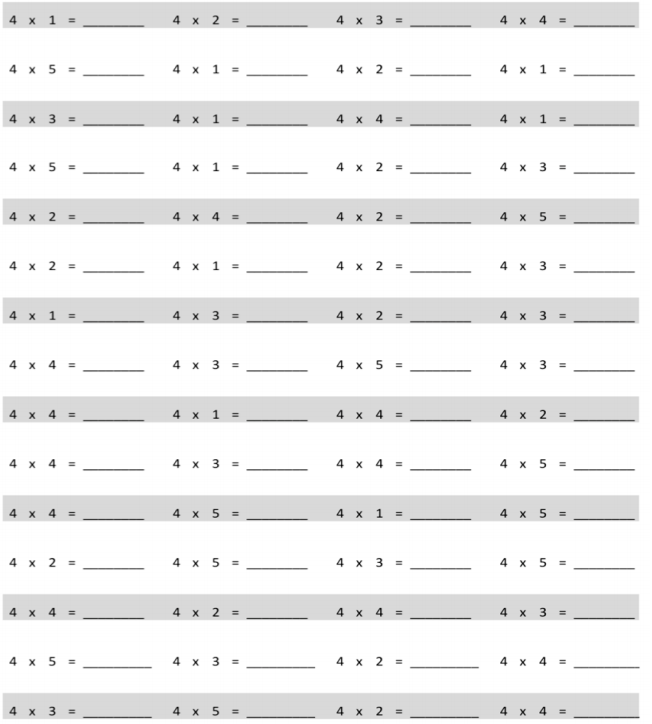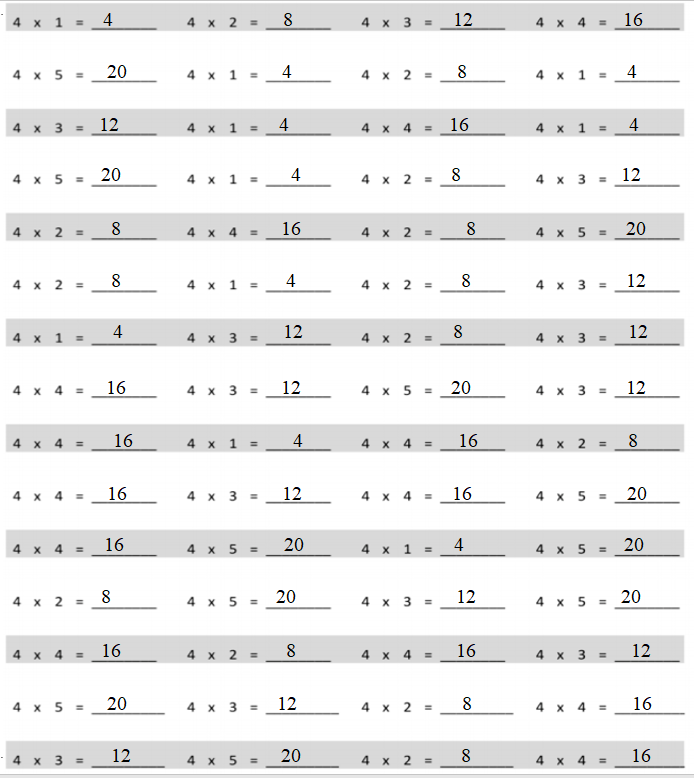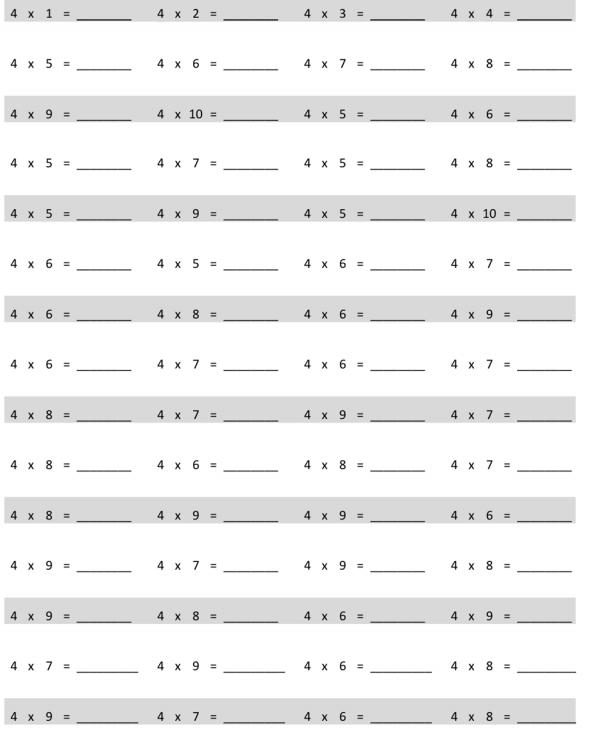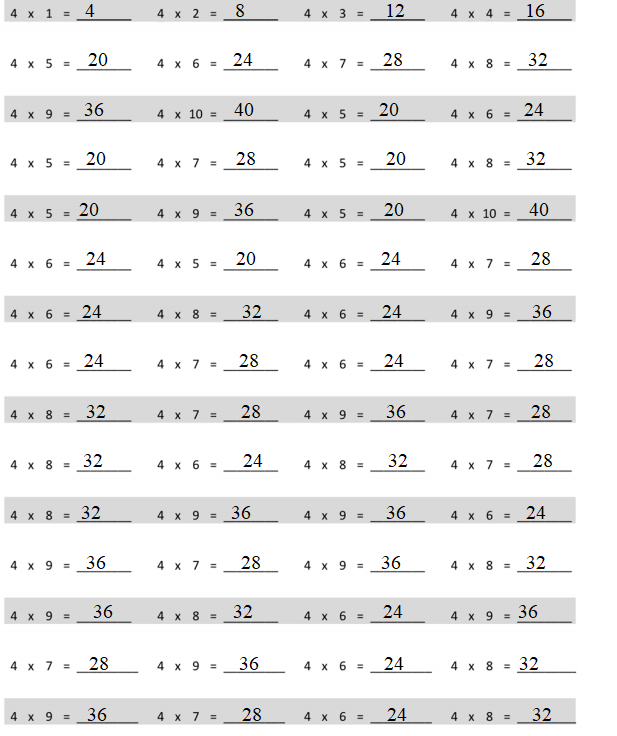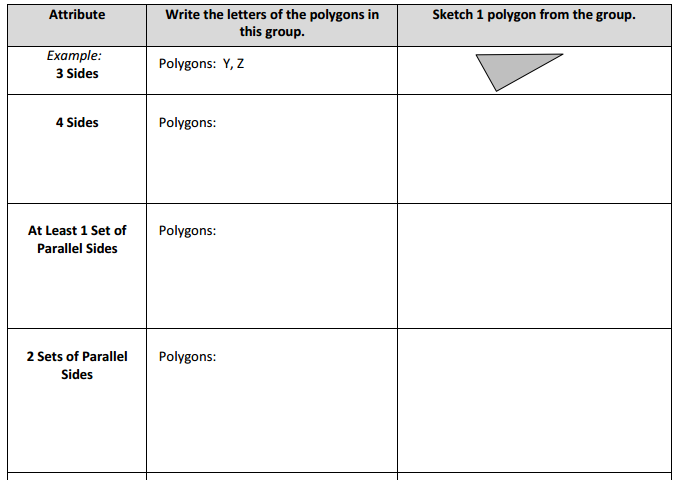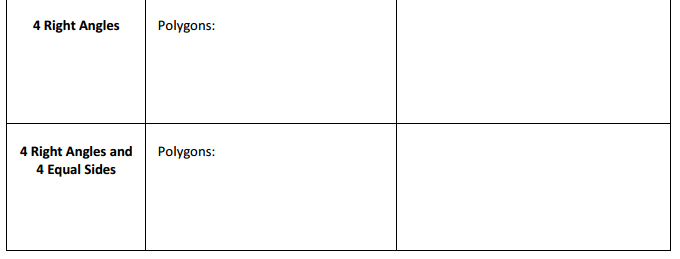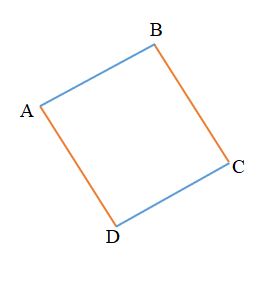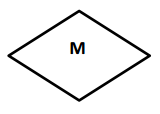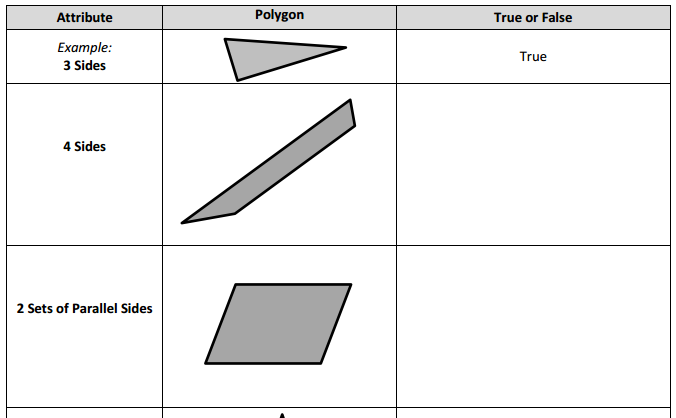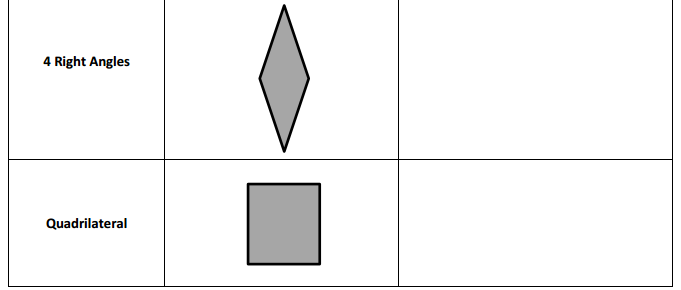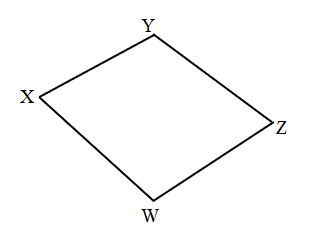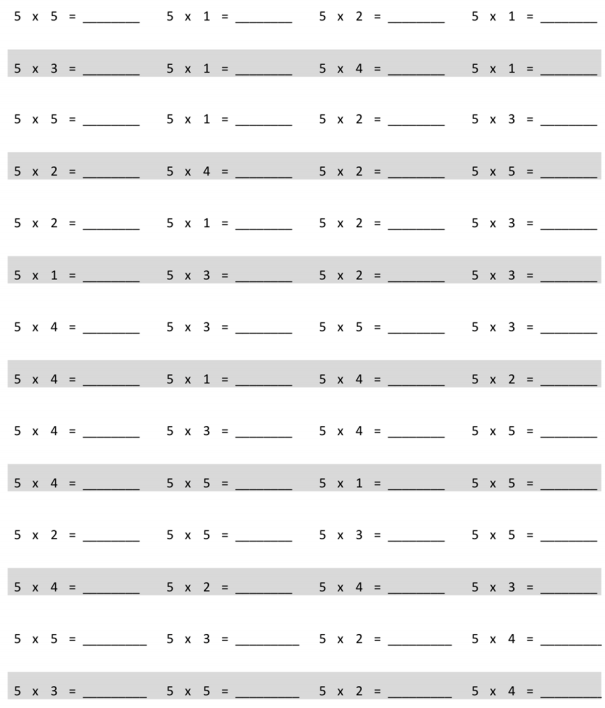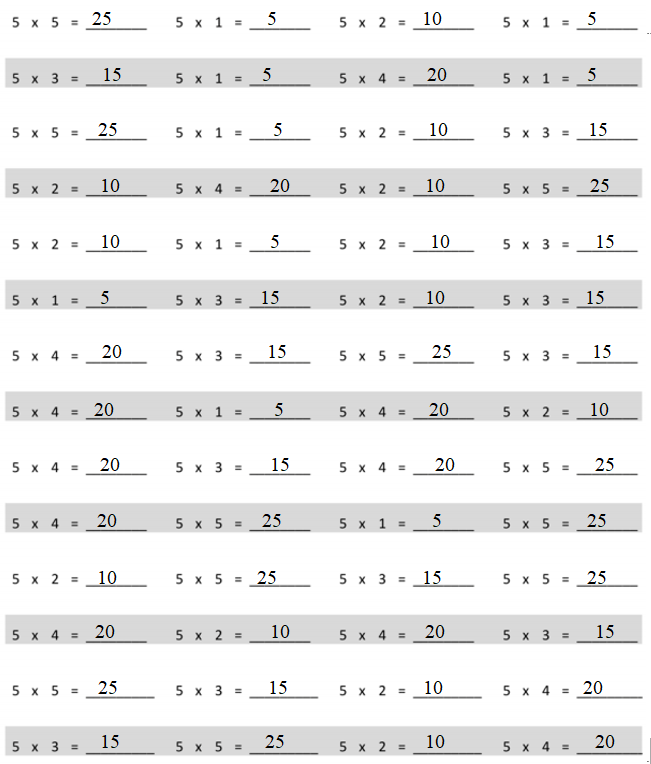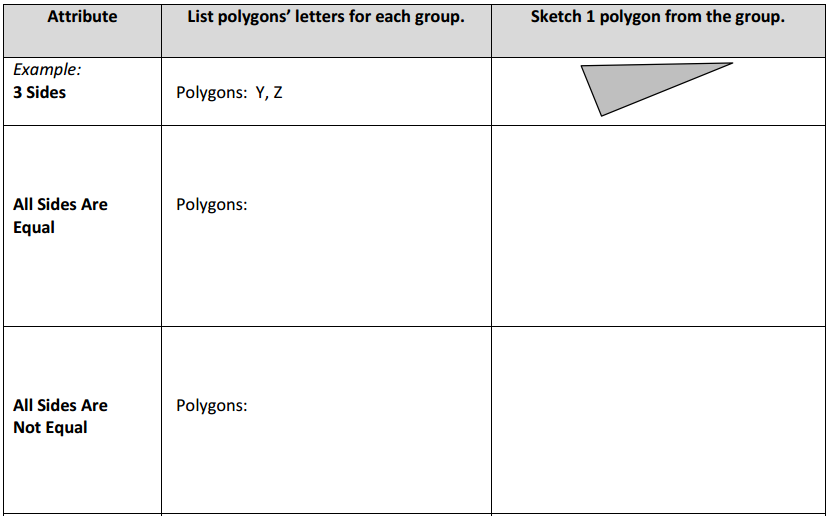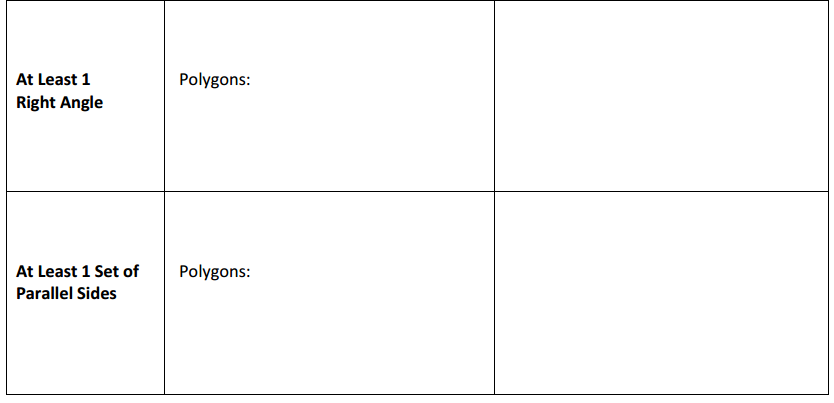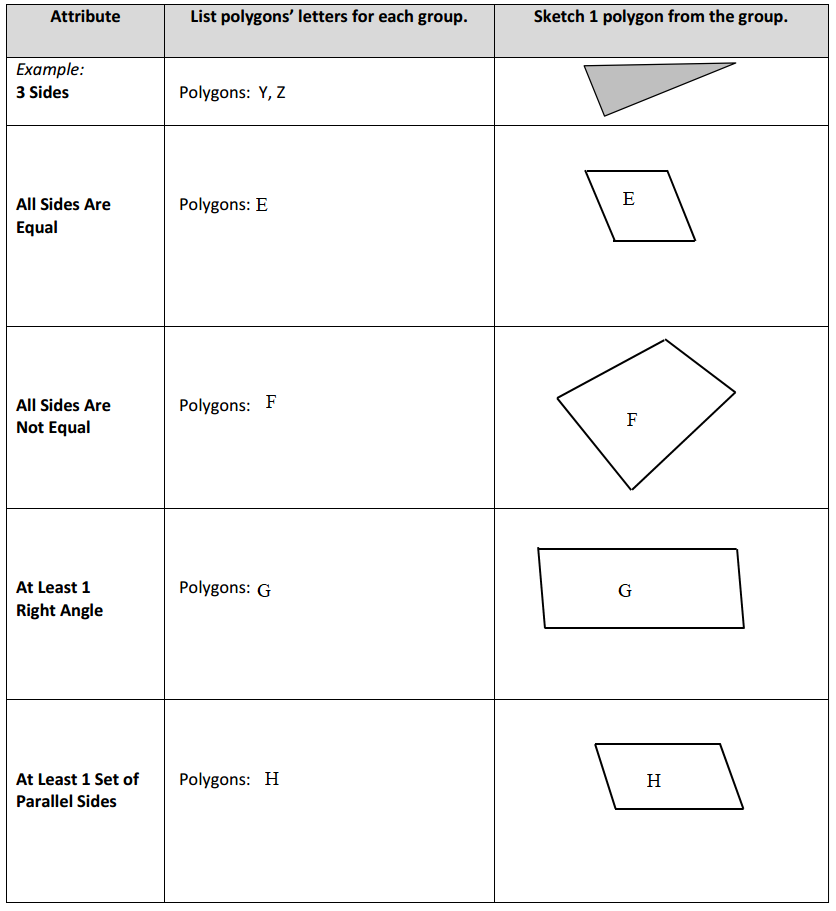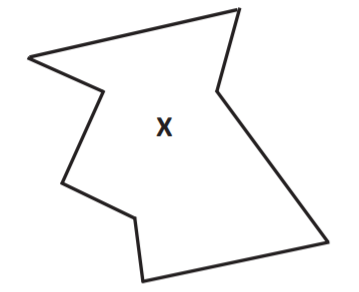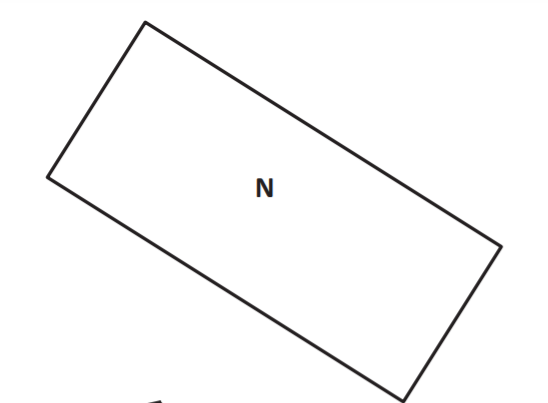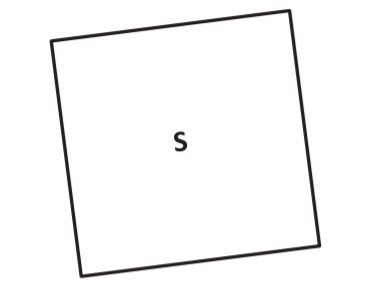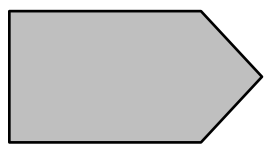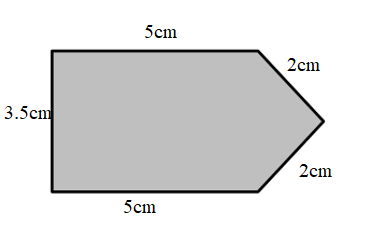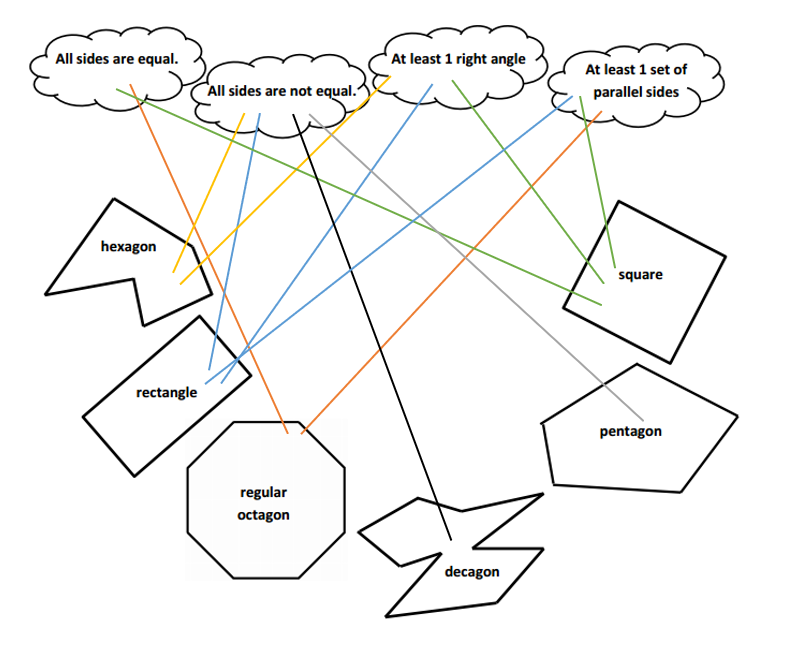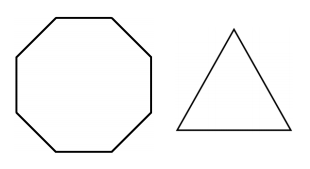Engage NY Eureka Math 3rd Grade Module 7 Lesson 2 Answer Key
Eureka Math Grade 3 Module 7 Answer Key
Eureka Math Grade 3 Module 7 Lesson 2 Pattern Sheet Answer Key
Multiply.
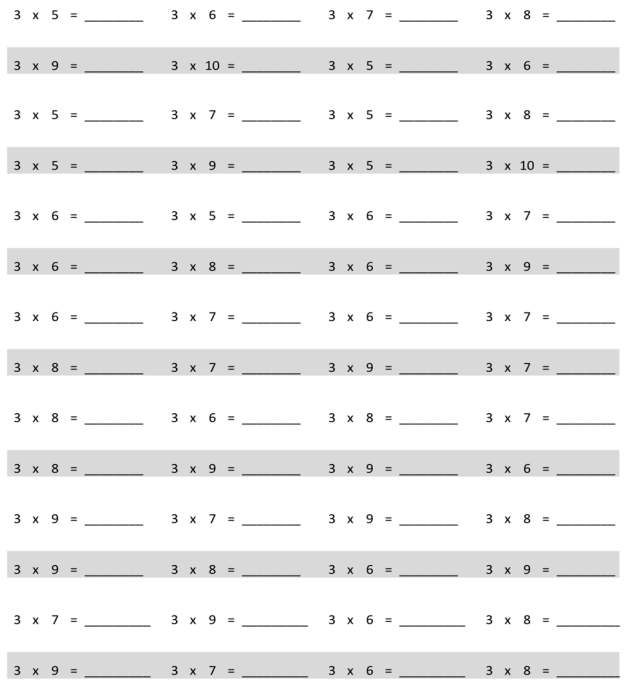
multiply by 3 (6–10)
Answer:
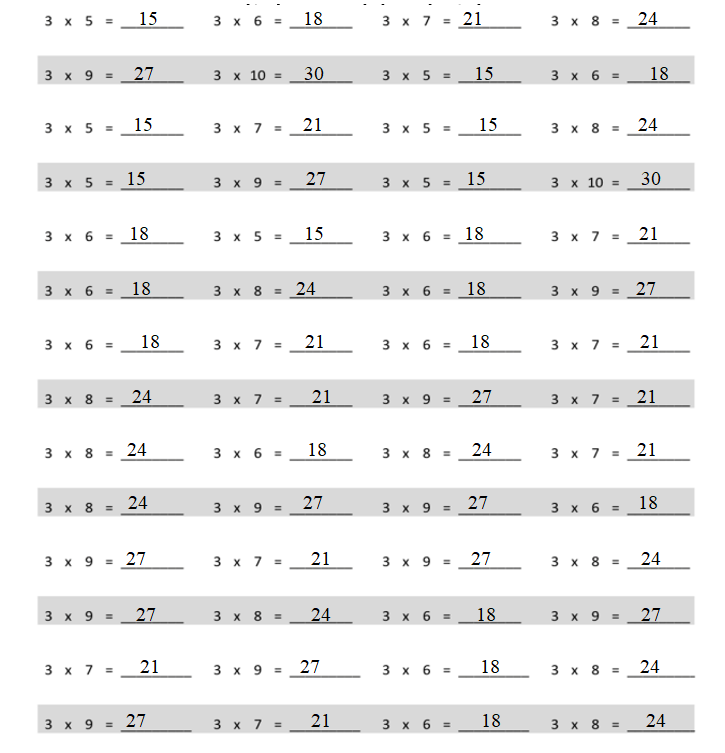
Explanation:
Explanation:
3 × 1 = 3
3 × 2 = 6
3 × 3 = 9
3 × 4 = 12
3 × 5 = 15
3 × 6 = 18
3 × 7 = 21
3 × 8 = 24
3 × 9 = 27
3 × 10 = 30.
Eureka Math Grade 3 Module 7 Lesson 2 Problem Set Answer Key
Use the RDW process to solve. Use a letter to represent the unknown in each problem.
Question 1.
Leanne needs 120 tiles for an art project. She has 56 tiles. If tiles are sold in boxes of 8, how many more boxes of tiles does Leanne need to buy?
Answer:
Number of boxes of 8 tiles needed to buy more = 8.
Explanation:
Number of tiles needed for an project = 120
Number of tiles Leanne has = 56
Number of more tiles needed to buy by Leanne = Number of tiles needed for an project – Number of tiles Leanne has
= 120 – 56
= 64.
If tiles are sold in boxes of 8.
=>Number of tiles a box consist = 8
Number of boxes of 8 tiles needed to buy more = Number of more tiles needed to buy by Leanne ÷ Number of tiles a box consist
= 64 ÷ 8
= 8.
Question 2.
Gwen pours 236 milliliters of water into Ravi’s beaker. Henry pours 189 milliliters of water into Ravi’s beaker. Ravi’s beaker now contains 800 milliliters of water. How much water was in Ravi’s beaker to begin with?
Answer:
Total number of milliliters of water was in Ravi’s beaker to begin with = 425.
Explanation:
Number of milliliters of water Gwen pours into Ravi’s beaker = 236
Number of milliliters of water Henry pours into Ravi’s beaker = 189
Ravi’s beaker now contains 800 milliliters of water.
Total number of milliliters of water was in Ravi’s beaker to begin with = Number of milliliters of water Gwen pours into Ravi’s beaker + Number of milliliters of water Henry pours into Ravi’s beaker
= 236 + 189
= 425.
Question 3.
Maude hung 3 pictures on her wall. Each picture measures 8 inches by 10 inches. What is the total area of the wall covered by the pictures?
Answer:
Total area of the wall covered by the pictures = 240 inches.
Explanation:
Maude hung 3 pictures on her wall.
=> Number of pictures hung on the wall = 3
Length of the each picture = 10 inches
Width of the each picture = 8 inches
Area of the each picture = Length of the each picture × Width of the each picture
= 10 × 8
= 80 inches.
Total area of the wall covered by the pictures = Area of the each picture ×Number of pictures hung on the wall
= 80 × 3
= 240 inches.
Question 4.
Kami scored a total of 21 points during her basketball game. She made 6 two-point shots, and the rest were three-point shots. How many three-point shots did Kami make?
Answer:
Number of three-point shots she made = 15.
Explanation:
Total score point of Kami during her basketball game = 21
Number of two-point shots she made = 6
Number of three-point shots she made = Total score point of Kami during her basketball game – Number of two-point shots she made
= 21 – 6
= 15.
Question 5.
An orange weighs 198 grams. A kiwi weighs 85 grams less than the orange. What is the total weight of the fruit?
Answer:
Total weight of the fruits = 311 grams.
Explanation:
Weight of Orange fruit = 198 grams
A kiwi weighs 85 grams less than the orange.
=> Weight of Kiwi fruit = Weight of Orange fruit – 85
=> Weight of Kiwi fruit = 198 – 85
=> Weight of Kiwi fruit = 113 grams
Total weight of the fruits = Weight of Orange fruit + Weight of Kiwi fruit
= 198 + 113
= 311 grams.
Question 6.
The total amount of rain that fell in New York City in two years was 282 centimeters. In the first year, 185 centimeters of rain fell. How many more centimeters of rain fell in the first year than in the second year?
Answer:
Amount of Rain fell in the first year than in the second year = 88 centimeters.
Explanation:
Total amount of rain that fell in New York City in two years = 282 centimeters
Amount of rain fell in the First year = 185 centimeters
Amount of rain fell in the Second year = Total amount of rain that fell in New York City in two years – Amount of rain fell in the First year
= 282 – 185
= 97 centimeters.
Amount of Rain fell in the first year than in the second year = Amount of rain fell in the First year – Amount of rain fell in the Second year
= 185 – 97
= 88 centimeters.
Eureka Math Grade 3 Module 7 Lesson 2 Exit Ticket Answer Key
Use the RDW process to solve the problem below. Use a letter to represent the unknown.
Jaden’s bottle contains 750 milliliters of water. He drinks 520 milliliters at practice and then another 190 milliliters on his way home. How many milliliters of water are left in Jaden’s bottle when he gets home?
Answer:
Amount of water left in Jaden’s bottle when he gets home = 40 milliliters.
Explanation:
Total amount of water Jaden’s bottle contains = 750 milliliters
Amount of water he drinks at practice = 520 milliliters
Amount of water he drinks on his way home = 190 milliliters
Amount of water left in Jaden’s bottle when he gets home = Total amount of water Jaden’s bottle contains – ( Amount of water he drinks at practice + Amount of water he drinks on his way home)
= 750 – ( 520 + 190)
= 750 – 710
= 40 milliliters.
Eureka Math Grade 3 Module 7 Lesson 2 Homework Answer Key
Use the RDW process to solve. Use a letter to represent the unknown in each problem.
Question 1.
A box containing 3 small bags of flour weighs 950 grams. Each bag of flour weighs 300 grams. How much does the empty box weigh?
Answer:
Weight of the empty box = 50 grams.
Explanation:
Weight of a box containing 3 small bags of flour weighs = 950 grams
Weight of each bag of flour = 300 grams
Weight of 3 bag of flour = 300 × 3 = 900 grams
Weight of the empty box = Weight of a box containing 3 small bags of flour weighs – Weight of 3 bag of flour
= 950 – 900
= 50 grams.
Question 2.
Mr. Cullen needs 91 carpet squares. He has 49 carpet squares. If the squares are sold in boxes of 6, how many more boxes of carpet squares does Mr. Cullen need to buy?
Answer:
Number of squares boxes of 6 he needs to buy more = 7.
Explanation:
Number of carpet square Mr. Cullen needs = 91
Number of carpet square he has = 49
Number of carpet square he needs more = Number of carpet square Mr. Cullen needs – Number of carpet square he has
= 91 – 49
= 42.
Number of squares in the box = 6
Number of squares boxes of 6 he needs to buy more = Number of carpet square he needs more ÷ Number of squares in the box
= 42 ÷ 6
= 7.
Question 3.
Erica makes a banner using 4 sheets of paper. Each paper measures 9 inches by 10 inches. What is the total area of Erica’s banner?
Answer:
Total area of Erica’s banner = 360 inches.
Explanation:
Number of sheets of paper Erica makes a banner = 4
Length of the each paper = 10 inches
Width of the each paper = 9 inches
Area of the each paper = Length of the each paper × Width of the each paper
= 10 × 9
= 90 inches.
Total area of Erica’s banner = Area of the each paper × Number of sheets of paper Erica makes a banner
= 90 × 4
= 360 inches.
Question 4.
Monica scored 32 points for her team at the Science Bowl. She got 5 four-point questions correct, and the rest of her points came from answering three-point questions. How many three-point questions did she get correct?
Answer:
Number of points scored by her for answering three-point questions correct = 27.
Explanation:
Number of points scored by Monica for her team at the Science Bowl = 32
Number of points scored by her for four-point questions correct = 5
Number of points scored by her for answering three-point questions correct = Number of points scored by Monica for her team at the Science Bowl – Number of points scored by her for four-point questions correct
= 32 – 5
= 27.
Question 5.
Kim’s black kitten weighs 175 grams. Her gray kitten weighs 43 grams less than the black kitten. What is the total weight of the two kittens?
Answer:
Total weight of Kim’s black kitten and gray kitten = 307 grams.
Explanation:
Weight of the Kim’s black kitten = 175 grams
Her gray kitten weighs 43 grams less than the black kitten.
=> Weight of the Kim’s gray kitten = Weight of the Kim’s black kitten – 43
= 175 – 43
= 132 grams.
Total weight of Kim’s black kitten and gray kitten = Weight of the Kim’s black kitten + Weight of the Kim’s gray kitten
= 175 + 132
= 307 grams.
Question 6.
Cassias and Javier’s combined height is 267 centimeters. Cassias is 128 centimeters tall. How much taller is Javier than Cassias?
Answer:
Height of Javier’s more than Cassias height = 11 centimeters.
Explanation:
Height of Cassias and Javier’s combined = 267 centimeters.
Height of Cassias = 128 centimeters
Height of Javier = Height of Cassias and Javier’s combined – Height of Cassias
= 267 – 128
= 139.
Height of Javier’s more than Cassias height = Height of Javier – Height of Cassias
= 139 – 128
= 11 centimeters.
